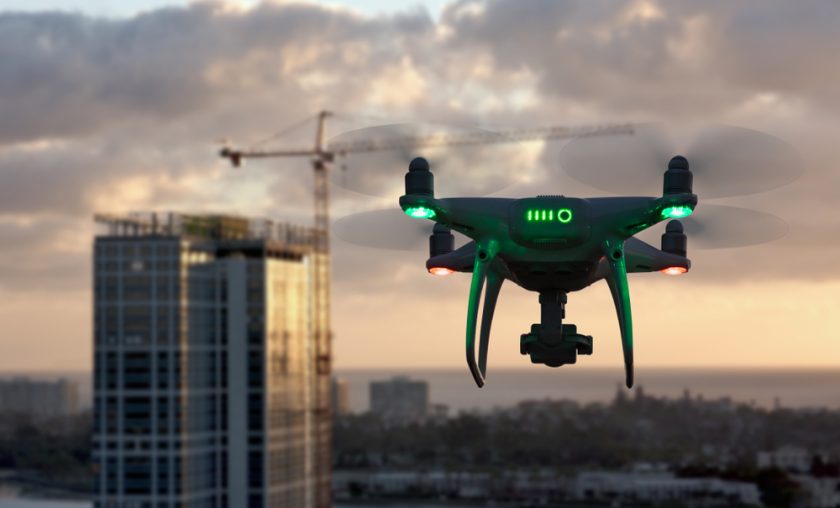Uncrewed air system (UAS) system safety, alignment in standards between aviation and cellular communities, UAS navigational systems, protection from Global Navigation Satellite Signals (GNSS) interference and detect and avoid capabilities are among some of the most high priority gaps in standards creation, according to the latest American National Standards Institute’s (ANSI) Unmanned Aircraft Systems Standardization Collaborative (UASSC) gap-analysis report.
The collaborative is tracking progress by standards developing organizations (SDOs) and others to address the gaps identified in the UASSC’s Standardization Roadmap for Unmanned Aircraft Systems (Version 2.0, June 2020). The updates provided in this progress report were derived from various sources: direct inputs from SDO staff and subject matter experts (with attribution), SDO alert mechanisms, and independent research by ANSI staff based on publicly available SDO work programmes and other information.
Here are some of the key findings of the latest report:
“There is a lack of standards specifically for UAS navigation. There is a lack of navigation standards in novel environments where aircraft typically do not operate such as in “urban canyons.” Challenging environments may invoke capabilities such as vision-based navigation. Otherwise, UAS could use existing ground infrastructure such as very high frequency (VHF) omni-directional range (VOR), non-directional beacons (NDB), instrument landing systems (ILS), and satellite infrastructure (GPS), which has vast coverage, and make use of the new enhanced, long-range navigation (eLORAN) standards in development. UAS navigation can leverage many of the same standards used for manned aircraft, but at a smaller scale and lower altitudes.”
“Standards are needed to address systems that provide a DAA capability for UAS that do not have the size, weight, and power (SWAP) required by the current DAA TSOs (TSOC211, TSO-C212 and TSO-C213). Work already has been done and is ongoing to address this gap….”
“There are standards in place for spoofing and jamming mitigation for manned aircraft. However, these standards are currently being updated to reflect increasing demands on GNSS systems, ongoing efforts to improve mitigation measures/operational needs, and heightened awareness of nefarious activities using spoofing and jamming technologies. Given the fact that manned aircraft standards are being updated/improved, there is a significant gap with how these standards may be applied to UAS platforms. See the command and control section for related discussion….”
“A gap exists in alignment between the aviation and cellular SDO communities, even when sufficient SDO efforts exist within each community. The telecommunications industry has already taken a number of steps to develop standards, particularly in 3GPP, to prepare networks for UAS applications. However, it is expected that fully addressing all KPIs of the C2 link and all the realistic use cases coming from the aviation industry will require further standardization activities…”
These are the most critical gaps:
High Priority (Tier 1) (Most Critical)
- Gap A1: UAS Design and Construction (D&C) Standards (5/23/2022)
- Gap A2: UAS System Safety (5/24/2022)
- Gap A6: Alignment in Standards Between Aviation and Cellular Communities (6/2/2022)
- Gap A7: UAS Navigational Systems (6/1/2022)
- Gap A8: Protection from Global Navigation Satellite Signals (GNSS) Interference Including Spoofing and Jamming (5/24/2022)
- Gap A9: Detect and Avoid (DAA) Capabilities (6/1/2022)
- Gap A10: Software Considerations and Approval (5/24/2022)
- Gap A12: UAS Cybersecurity (6/3/2022)
- New Gap A20: Unlicensed Spectrum Interference Predictability (5/23/2022)
High Priority (Tier 2) (Critical)
- Gap A4: Avionics and Subsystems (5/20/2022)
- Gap A16: Mitigation Systems for Various Hazards to UAS (6/2022)
- Gap A18: Maintenance and Inspection (M&I) of UAS (6/10/2021)
- Gap A19: Enterprise Operations: Levels of Automation/ Autonomy and Artificial Intelligence (AI) (6/1/2022)
High Priority (Tier 3) (Least Critical)
- Gap A13: Electrical Systems (6/22/2021)
- Gap A14: Power Sources and Propulsion Systems (11/28/2021)
- Gap A15: Noise, Emissions, and Fuel Venting (11/29/2021)
- Gap A17: Parachute or Drag Chute as a Hazard Mitigation System in UAS Operations over People (OOP) (3/23/2021)
For more information
https://www.ansi.org/news/standards-news/all-news/2022/06/6-14-22-gaps-progress-report-available-ansi-uassc-standardization-roadmap-for-uas
(Image:SHutterstock)




